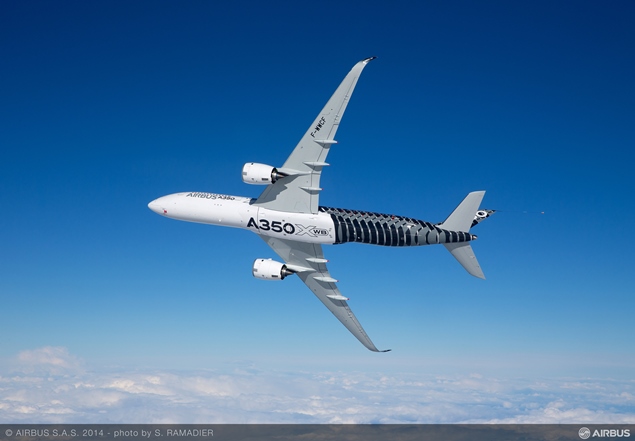
Thanks to the GPS constellation, aircraft navigation has significantly evolved over the past 20 years. Even if ILS remains the primary means for precision approaches, new technologies based on GPS now exist. Airbus has integrated these new technologies with an ILS look-alike interface which benefits from the ILS operational experience.
This is the xLS concept which aims at standardizing the way of flying an approach. Whatever the type of straight-in approach, the aircraft functions are designed to provide the crew with a similar and consistent operational solution. This concept provides not only the same guidance modes or displays to the crew but is also based on similar avionics architecture.
As part of this xLS concept, Airbus already proposes for all aircraft families:
- ILS (Instrument Landing System)
- GLS (GBAS Landing System)
- FLS (FMS Landing System) which extends the ILS lookalike concept to non-precision approaches (VOR, NDB, RNAV…)
On A350 XWB, Airbus innovated by pushing the concept one step further with the SLS (Satellite Landing System). This new function uses GPS augmentation coming from SBAS systems such as WAAS or EGNOS to allow the aircraft to fly down to LPV minima, as low as 200 ft DH and 550m RVR.
Thanks to this SLS function Airbus is looking at maximizing airport accessibility for all its operators by providing a real “Precision Approach Service”. This includes in particular a geometrical vertical guidance which is fully independent from barometric setting error or temperature effect. The SLS function can enhance the airlines operations in multiple situations: at airport currently not having precision approach, at main runways as a backup of ILS (e.g. during maintenance) or at alternate airports in case of diversion. Airbus is therefore happy to see that LPV is increasing quickly all over Europe.For example, in April Paris Charles de Gaulle will have LPV approaches with 200 ft minima. So during ILS antenna replacements, which are scheduled between 2016 and 2020, the A350 XWB could still have the capability to fly down to CAT I minima thanks to the SLS function.
Since the function was developed according to the xLS concept, there is no specific training required to fly a LPV approach. All pilots are trained to follow ILS beam and the SLS function provides a similar operational environment: the approach preparation is the same and the approach execution also. The aim of this concept is to have the crew immediately comfortable with new approach function. And this was confirmed during A350 XWB flight tests campaign.
In addition, pilots observed that the SLS signal was often better than CAT I ILS: aircraft position relative to the trajectory is always available and reliable, there are no false LOC or G/S side lobes and finally there is no interference linked to ILS protected area. In a nutshell the pilot’s feedback is excellent!
In terms of avionics architecture, the SLS function is hosted in the MMR. Through the GPS antenna, the MMR receives data from the GPS constellation and from the SBAS geostationary satellite. These data are then used to compute the LOC and G/S deviations which are sent to peripheral systems as if they were received from an ILS beam. The reference trajectory is based on a secured FAS, extracted from the navigation database. The MMR deviations are used by flight controls to guide the aircraft along the trajectory, and are also displayed on EFIS for pilot monitoring.
In the end, the SLS development on the A350 XWB was a very positive experience and Airbus is proud to have the first wide-body aircraft embedding the SBAS technology. This function provides high efficiency and flexibility to enhance A350 XWB operations. And it is already a success since more than 10 customers have selected this option: in a few years, more than 300 A350 XWB operating from all over the world will have the SLS capability! This new technology is unquestionably going to bring value in the precision approach domain.

